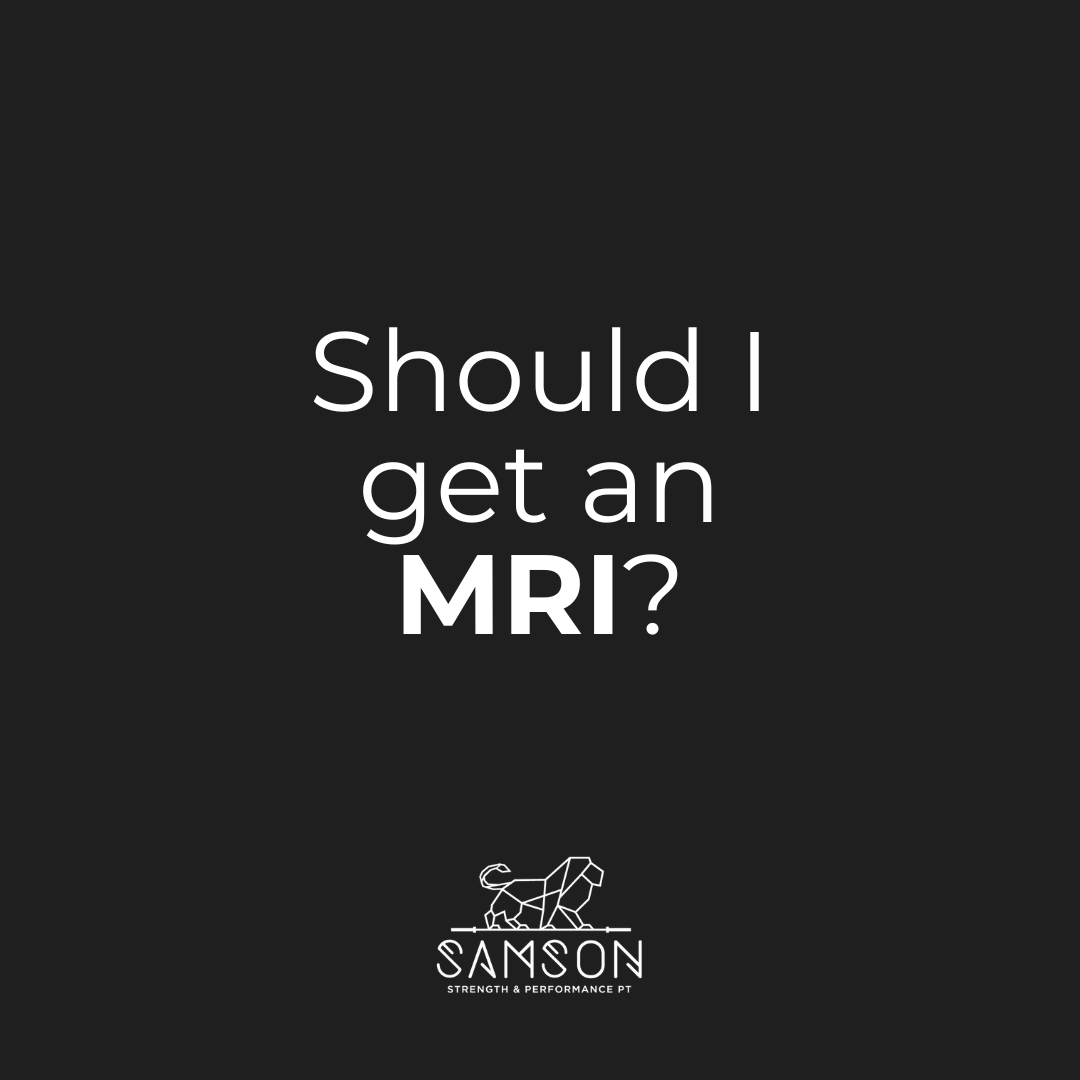Should I get an MRI?
Should I get an MRI?
This is a question that we often get asked by our patients on their initial visit. The answer sometimes depends on the caliber of the athlete and his/her goals, but for the general population, our answer is a decisive no.
Although the MRI is often made out to be the gold standard of diagnosing soft tissue pathology, it is only a picture of your body at a very specific point in time. Many of our athletes have pain with certain movements, so an image of their body in one position does not tell much of a story.
Additionally, if you have no intentions of opting for surgery should your MRI report come back with a diagnosis of a torn rotator cuff or a herniated disc, why would you opt to do one in the first place? I guess if you like to spend thousands of dollars for no reason, it could be fun…?
We searched through several research articles to get a more in depth look at what MRIs can and can’t do and I think you’ll find the results quite shocking… With regard to neck, back, shoulder and knee MRIs, the findings suggest that injury is commonly found on MRIs of asymptomatic people AND that no significant findings are found in subjects WITH pain.
There is also a study that found variability of interpretations of a patient’s MRI between multiple radiologists! So if you don’t like the results of your MRI, go down the road and see what the next person says.
Here are some of the findings from these studies:
Neck MRI Results:
Of 20 MRIs taken of asymptomatic necks, 17 were found to have anular tears.
Of 21 MRIs taken of individuals with pain, only 10 were found to have anular tears.
Conclusion: “Significant cervical disc anular tears often escape magnetic resonance imaging detection, and magnetic resonance imaging cannot reliably identify the source(s) of cervical discogenic pain.”
(Schellhas, et al, 1996)
87.6% of subjects presented with disc bulging regardless of reported levels of pain
73.3% of male subjects and 78% of female subjects in their 20s presented with disc bulging
Conclusion: “Disc bulging was frequently observed in asymptomatic subjects, even including those in their 20s.”
(Nakashima, et al, 2015)
Back MRI Results:
Disk degeneration in asymptomatic individuals increased from 37% of 20-year-old individuals to 96% of 80-year-old individuals
Disk bulge in asymptomatic individuals increased from 30% of those 20 years of age to 84% of those 80 years of age.
Disk protrusion asymptomatic individuals increased from 29% of those 20 years of age to 43% of those 80 years of age.
Conclusion: “Imaging findings of spine degeneration are present in high proportions of asymptomatic individuals, increasing with age. Many imaging-based degenerative features are likely part of normal aging and unassociated with pain. These imaging findings must be interpreted in the context of the patient's clinical condition.”
(Brinjikji, et al, 2015)
Shoulder MRI Results:
Of 10 MRIs taken of asymptomatic shoulders, 6 were found to have partial to full supraspinatus tears and 2 were found to have a small labrum tear
Of 10 MRIs taken of individuals with past shoulder pain, 5 were found to have partial to full supraspinatus tears and 2 were found to have a small labrum tear
Of 10 MRIs taken of individuals with current shoulder pain, 8 were found to have partial to full supraspinatus tears and 1 was found to have a large labrum tear
Conclusion: “The cost burden of ordering MRI scans is significant and the relevance of the findings are questionable when investigating shoulder pain.”
(Gill, et al, 2014)
Knee MRI Results:
Of 74 MRIs taken of asymptomatic knees, 16% were found to have meniscal abnormalities consistent with a tear.
Conclusion: “The high incidence of abnormal MRI findings in asymptomatic subjects underscores the danger of relying on a diagnostic test without careful correlation with clinical signs and symptoms.”
(Boden, et al, 1992)
Reliability:
In a study designed to test variability of findings and range of errors within multiple radiologist’s MRI report findings, poor overall agreement was found on interpretive findings with false positives and false negatives
Conclusion: “Where a patient obtains his or her MRI examination and which radiologist interprets the examination may have a direct impact on radiological diagnosis, subsequent choice of treatment, and clinical outcome.”
(Herzog, et al, 2017)
After reading through these findings, it is easy to see why we don’t often recommend our patients receive an MRI right off the bat. There are multiple valuable tests our expert physical therapists can do within the clinic that give a better idea of what tissues are involved in your injury. Our expert guess is as good as theirs!
In fact, in many cases where a patient wanted to get an MRI for peace of mind, the results were identical to the diagnosis they received within our clinic walls!
If you're ready to get some help and commit to actually getting better, we should talk. Click here to book a completely free 15 minute discovery call with someone from our team.
Written By: Dr. Delilah Beall, PT, DPT, CMTPT – CrossFit and Weightlifting Rehab Specialist at Samson Strength & Performance Pt in Jacksonville Beach, FL

